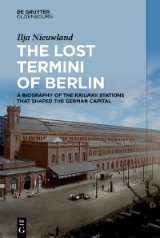Details

The Lost Termini of Berlin
A Biography of the Railway Stations that Shaped the German Capital1. Aufl.
|
29,95 € |
|
| Verlag: | De Gruyter |
| Format: | EPUB |
| Veröffentl.: | 04.11.2024 |
| ISBN/EAN: | 9783111381985 |
| Sprache: | englisch |
| Anzahl Seiten: | 228 |
DRM-geschütztes eBook, Sie benötigen z.B. Adobe Digital Editions und eine Adobe ID zum Lesen.
Beschreibungen
<p> From the birth of Berlin’s railway network to the time when the bombs of the Second World War and the concrete slabs of the Wall changed the city forever, the Prussian and later German capital counted eight major railway stations. These were beacons in the city: impressive monuments, magnificently built for the bygone rituals of arrival and departure, yet tightly woven into a distinct part of town. </p>
<p> Railway stations are magical, meaningful places, allowing for escape as well as promise, nostalgia as well as novelty. They process all sorts of people, from well-to-do business types to unfortunates forced to live on the fringes of society. There is a nervous energy around them, created by those looking forward to their journey, others trying to get oriented in a place that is new to them, and some facing the drudgery of yet another commute. </p>
<p> And if pre-World War 2 Berlin was anything, it was energetic. Building an adequate transport infrastructure for Europe’s fastest-growing city proved to be a continuous challenge that required flexibility and adaptation and touched the city in ways that can still be seen today. <a>This is the history of Berlin’s railway stations, the people that used them, and the way the city was shaped by them.</a> </p>
<p> Railway stations are magical, meaningful places, allowing for escape as well as promise, nostalgia as well as novelty. They process all sorts of people, from well-to-do business types to unfortunates forced to live on the fringes of society. There is a nervous energy around them, created by those looking forward to their journey, others trying to get oriented in a place that is new to them, and some facing the drudgery of yet another commute. </p>
<p> And if pre-World War 2 Berlin was anything, it was energetic. Building an adequate transport infrastructure for Europe’s fastest-growing city proved to be a continuous challenge that required flexibility and adaptation and touched the city in ways that can still be seen today. <a>This is the history of Berlin’s railway stations, the people that used them, and the way the city was shaped by them.</a> </p>
<p> <strong>Ilja Nieuwland</strong>, Huygens Institute, Royal Netherlands Academy of Arts and Sciences, Amsterdam, Niederlande. </p>
<p> </p>
<p> </p>

















